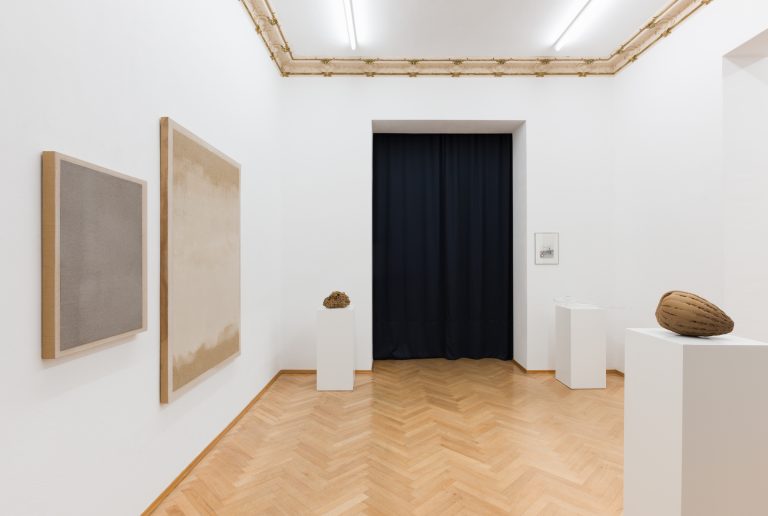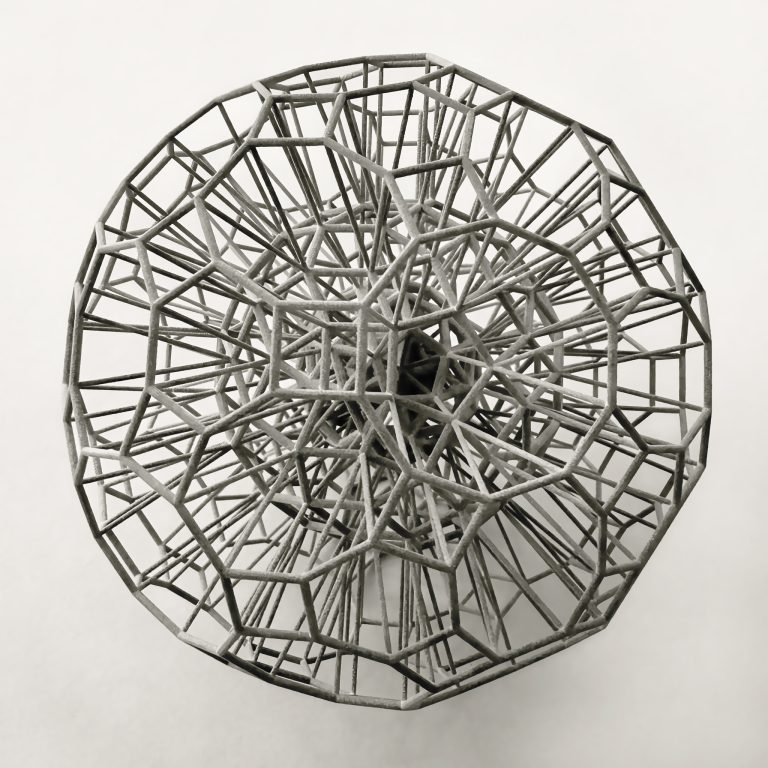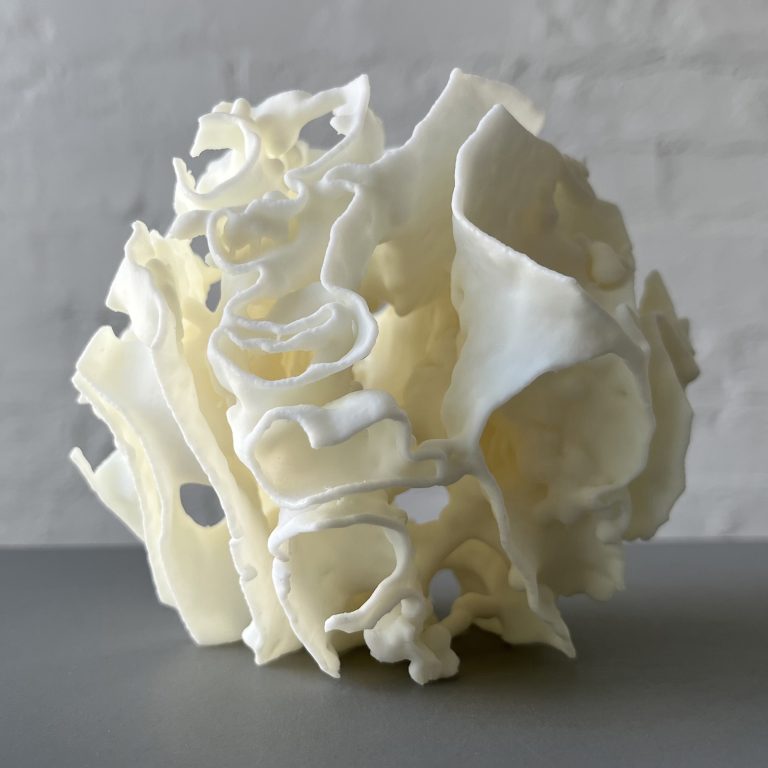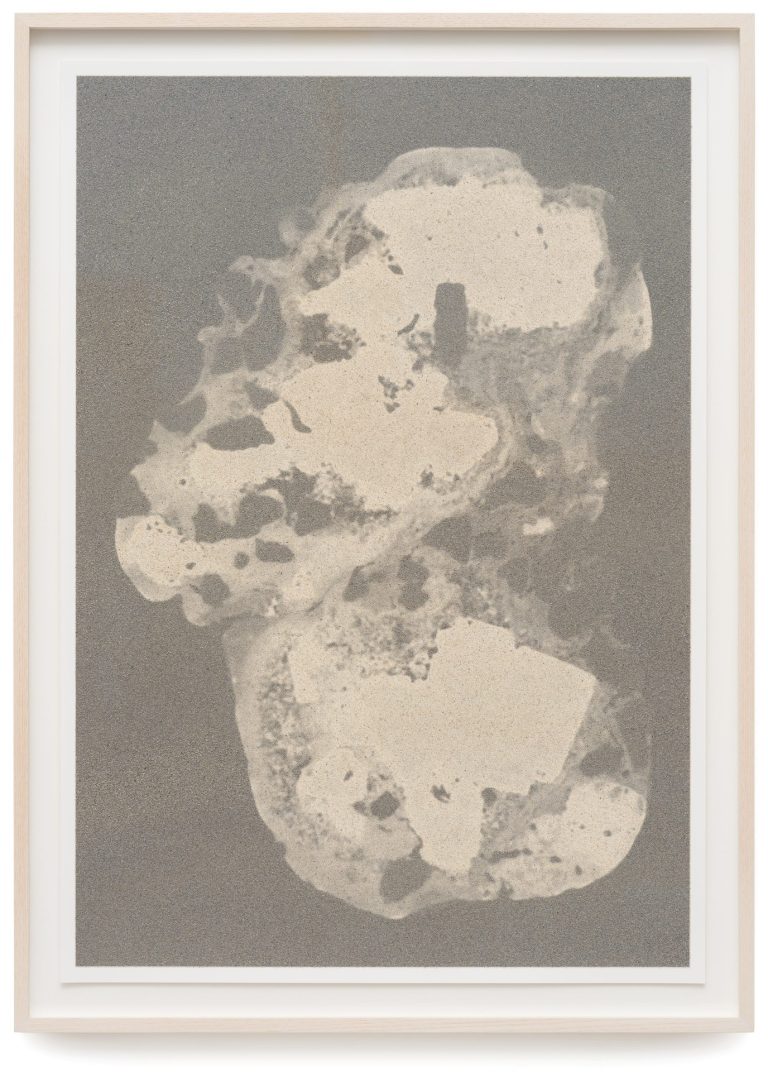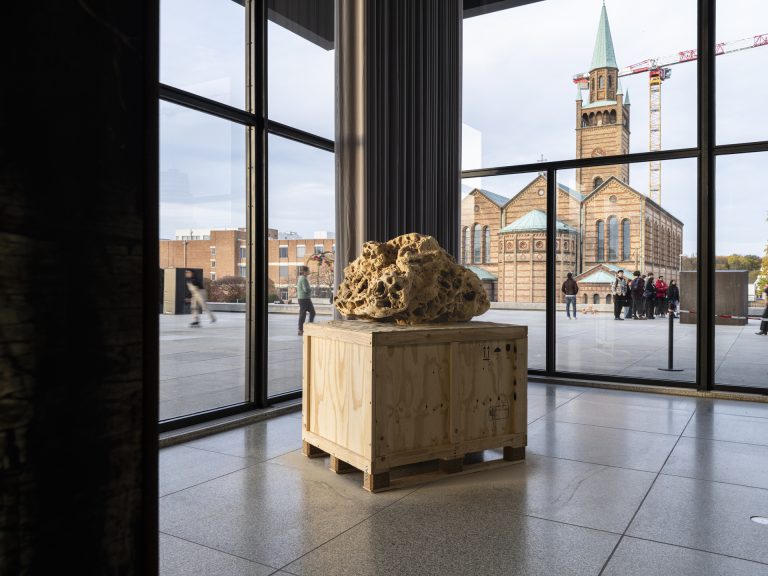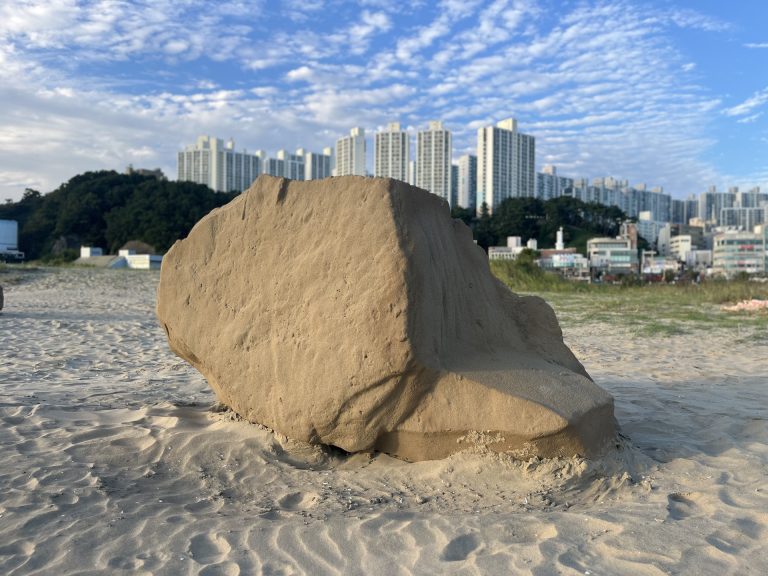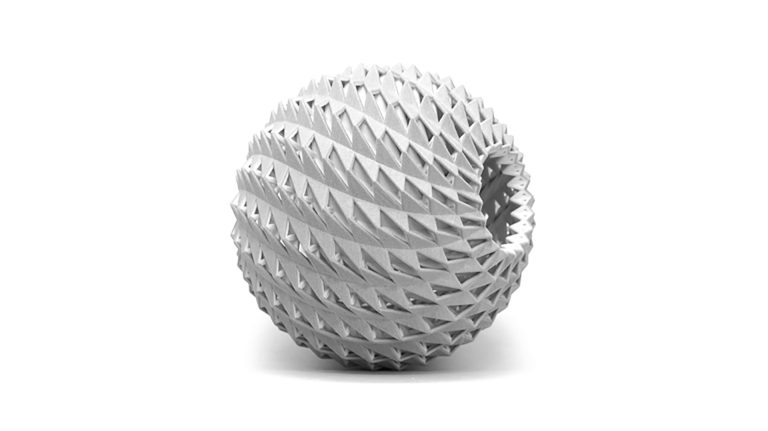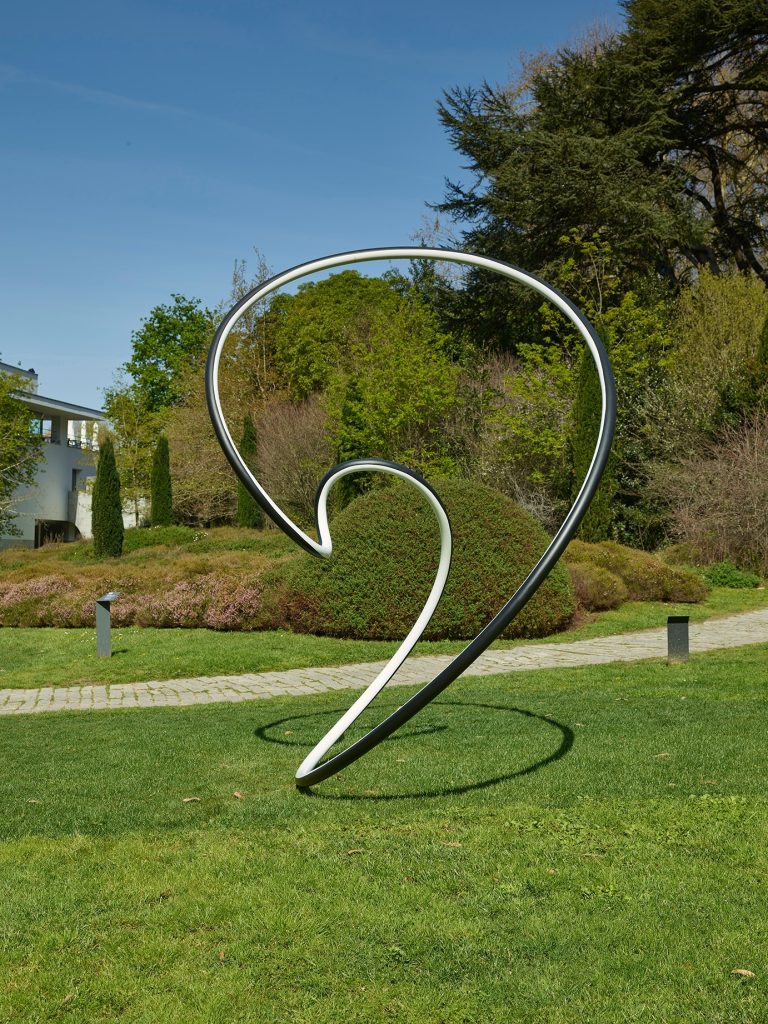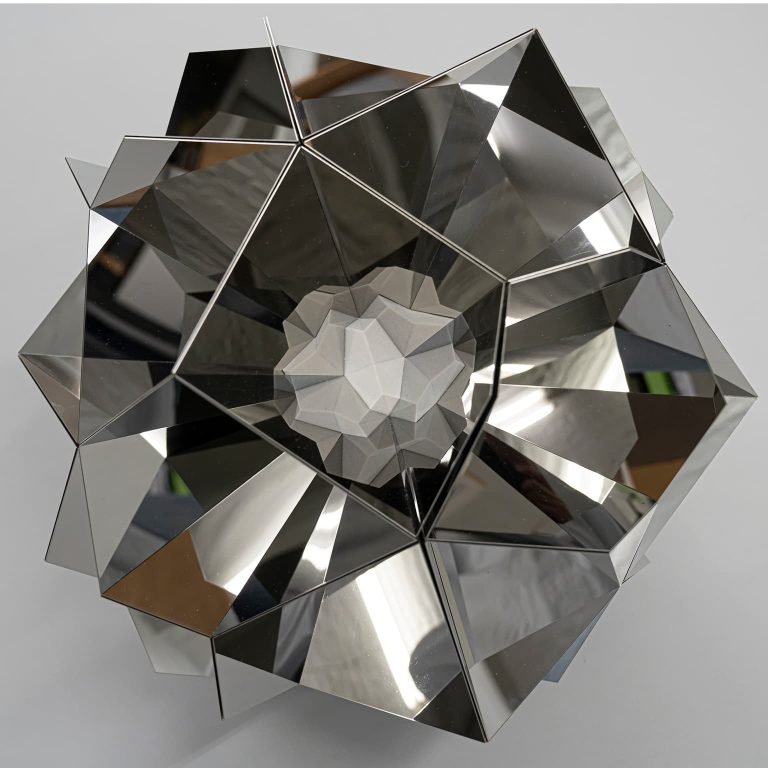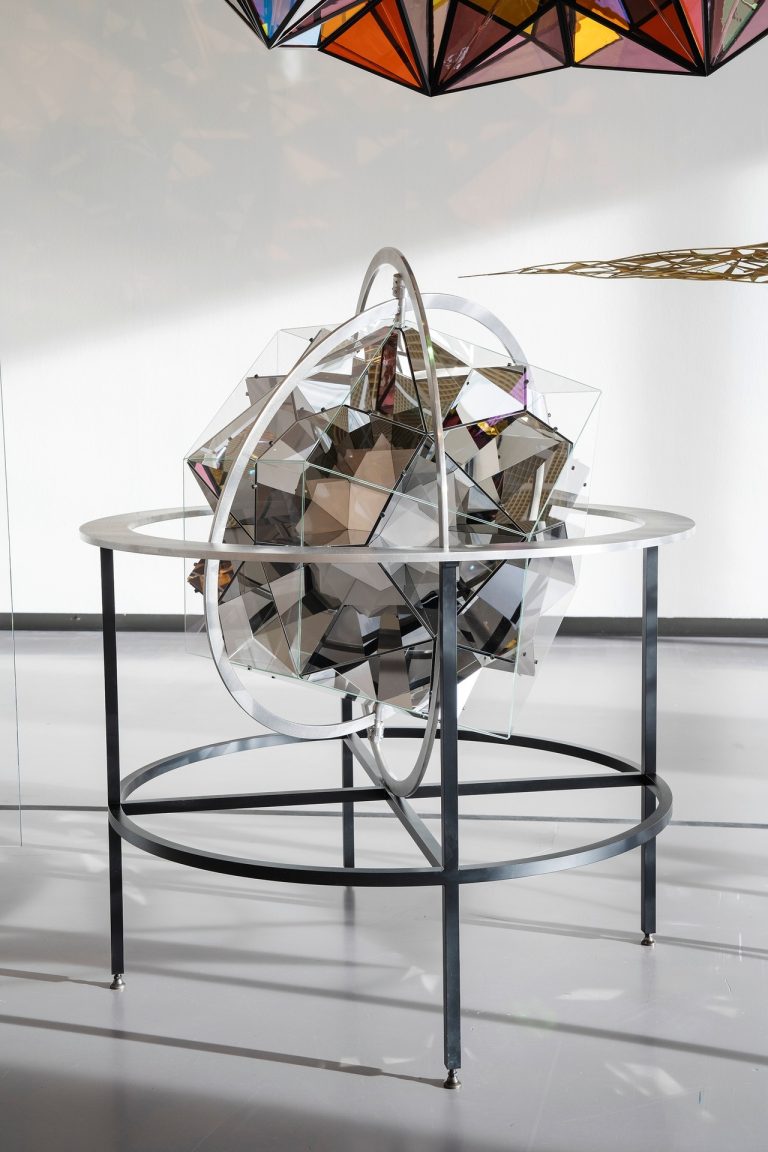The SuperCube Spheres study investigates scaling the SuperCubeSphere system into larger polyhedral structures. The research explores how fundamental three-cube and five-cube clusters extend through added cube pairs to create expanded icosahedral and dodecahedral forms. The investigation examines edge extension mechanisms where periodic assemblies of interlocking pairs lengthen structural connections. Each fundamental cluster establishes dihedral angles while additional elements provide linear growth. The study tests how this scaling principle maintains geometric coherence across different sizes. The research addresses which polyhedral forms result from systematic extension and how golden ratio relationships persist across scales. The fundamental spherical arrangement adapts to generate larger configurations while preserving the modular interlocking logic and icosahedral symmetry principles established in the base SuperCubeSphere.
Photography: Phillip C. Reiner



